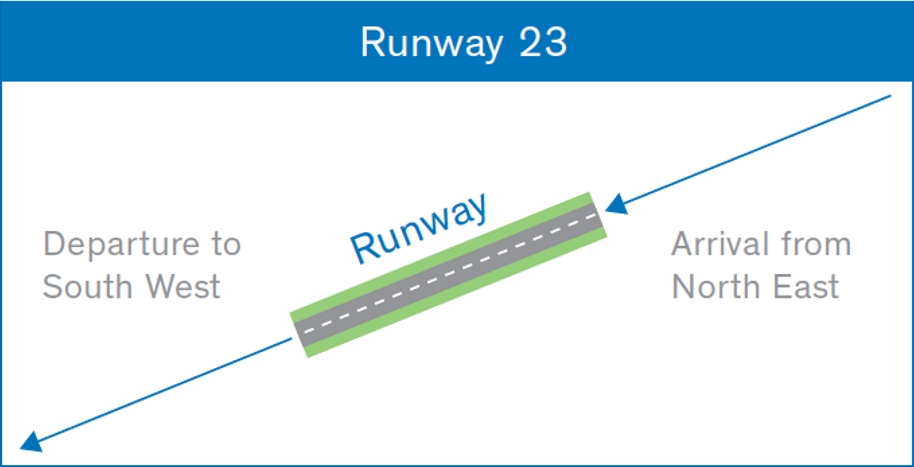Current Aircraft Noise Contours map
Use our online map to check whether your home may be eligible
The noise from a plane is caused by two things: from air going over its body (or ‘airframe’) and from its engines.
A moving aircraft causes friction and turbulence, which triggers sound waves. Generally, the faster the aircraft is flying, the more turbulence and friction will occur. When the aircraft’s landing gear and flaps are used, more noise is made because more resistance is being created.
The amount of noise this creates can vary according to the way the plane is flown, even for identical aircraft.
Engine noise is caused by the sound of moving parts, and by the air coming out of the engine at high speed and interacting with still air, creating friction. Modern bypass engines, which introduce a layer of moderately fast-moving cold air between the hot exhaust and the still air, are quieter than early jet engines, which didn’t use this technology.
The degree to which people experience aircraft noise on the ground has a lot to do with atmospheric conditions. Temperature, wind speed and direction, humidity, rain and cloud-cover all have a part to play in the way we hear aircraft noise. The reverberation of sound waves caused by the weather can make noises seem louder. Sometimes aircraft flying at altitudes that would not normally produce noise, may be heard in certain atmospheric conditions.
Planes need to land and take off into the wind. If there is a light breeze, they can also take off and land in the same direction as the wind, but with reduced payload. However, unless air traffic is very light, aircraft must land and depart in the same direction for safety reasons. That means an ‘into-the-wind’ runway direction is almost always adopted for landings and take offs.
Around 70 percent of the time at Auckland Airport, the wind comes from the west. So, most of the time aircraft land from the east, over Manukau and its neighbouring suburbs, and take off to the west, over Manukau Harbour, as illustrated below. The airport calls this mode of runway operation ‘Runway 23’.

For the 30 percent of time when an easterly wind prevails at Auckland Airport, planes must take off to the east, over Manukau city centre, and land from the west, over Manukau Harbour. The airport calls this mode of runway operation ‘Runway 05’.

